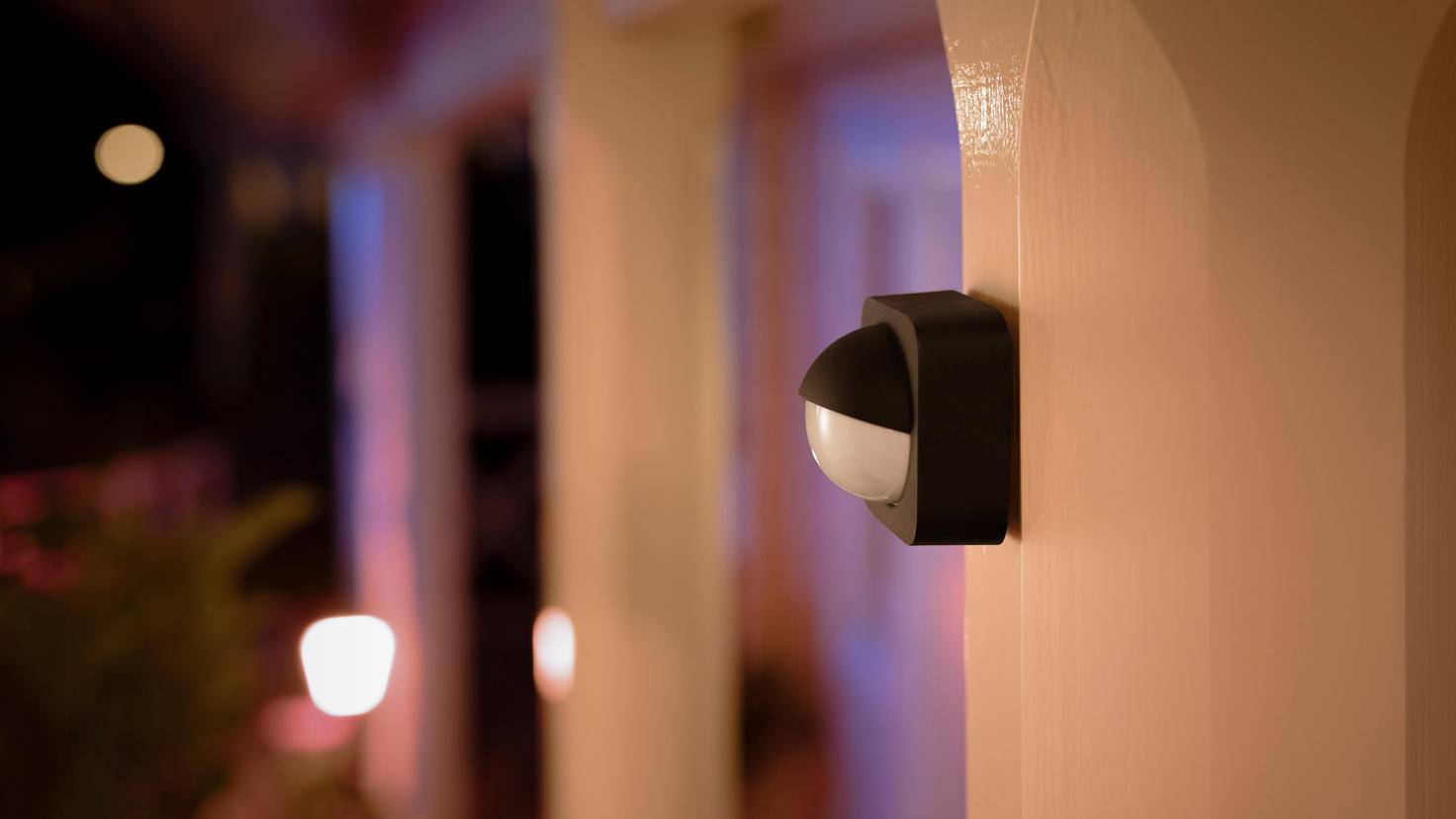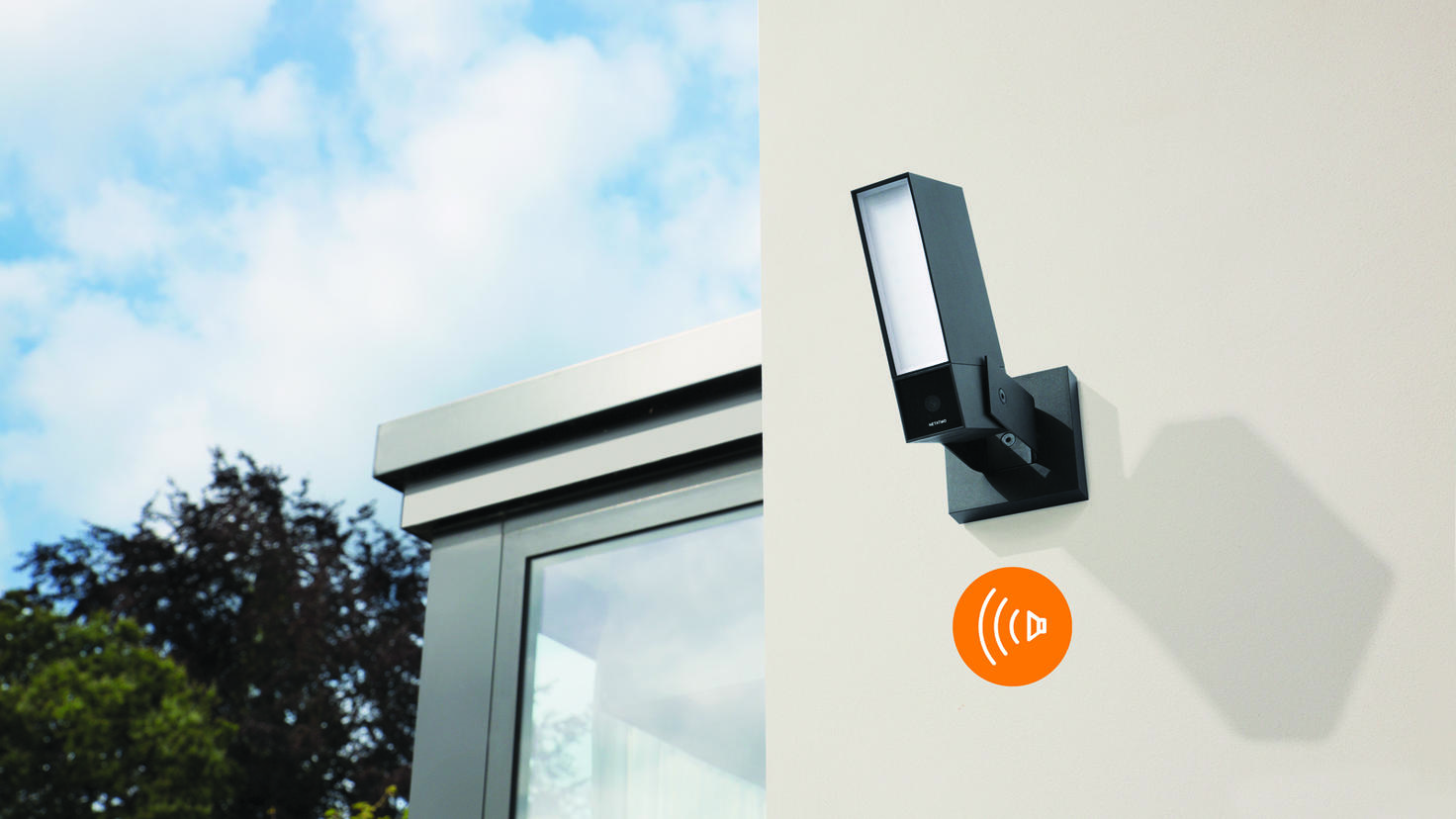How does a motion detector work? An explanation

Motion detectors are a blessing, especially in the dark season: The small devices are used in numerous public buildings, offices and private households, for example to switch on lights automatically. But how do motion sensors actually work?
The collective term motion sensor includes devices that work with different technologies. It’s not that easy to choose the right technique if you don’t know your way around. But this much should be said in advance: inexpensive models are also suitable for private households.
The Simple: The passive infrared detector

The Philips Hue motion detector for outdoor use is easy to attach and control via the app.
Image: © Signify 2019
Most motion detectors that are used in the private sphere are so-called passive infrared detectors, PIR detectors for short. A lens system is installed in them, which detects changes in the infrared thermal radiation in a defined area. Humans and animals emit this radiation through their skin – as do motorized objects such as cars. If the sensor registers an increase in thermal radiation, it reacts. If, for example, it is an outdoor light with a motion detector, the light switches on automatically, as with this one Philips Hue motion detector.
The advantage of PIR detectors: They are cheap to buy and usually absolutely sufficient for private use.
The disadvantage: You cannot see the thermal radiation through glass or other walls. In addition, the sensors are confused by strong temperature fluctuations and then no longer react correctly.
The exact one: the presence detector

Simply typing on a keyboard is enough for the presence detector to register movements.
Image: © Thinkstock/ Getty Images/ Creatas 2017
Motion sensors and occupancy detectors both use infrared technology – however, the occupancy detector is much more accurate and can detect even the smallest of movements, such as typing on a keyboard. This is why presence detectors are often found in offices, where they independently control the lighting, for example, and adapt it to the presence of people.
The advantage of the presence detector: It reacts precisely to very small movements and is therefore perfect for automating interior lighting.
The disadvantage of presence detectors: They are very sensitive and therefore rather out of place outdoors. In the worst case, a detector ensures that a light goes on automatically or an alarm system is triggered if even a cat scurries past.
The discreet one: the radar detector
The radar detectors, also known as high-frequency sensors, work more precisely than detectors with infrared technology. They emit high-frequency electromagnetic waves and measure whether objects or living beings reflect them through movements. The detectors do not register stationary objects as reflectors and therefore do not strike them, for example by switching on lights.
The advantage of radar motion detectors: The electromagnetic waves penetrate materials such as wood and glass – so you can install the detectors discreetly and disguised. In addition, temperature fluctuations do not bother them, so they are also suitable for outdoor use.
The disadvantage of radar detectors: They are not so easy to connect and should at best be installed by a professional.
There are also models that combine different technologies, for example the Lupus Dual Way Motion Detector. This combines PRI technology with a microwave field measurement. It can also be used in rooms with underfloor heating or conservatories, where changes in the temperature field in PIR detectors would lead to false alarms.
The far-sighted: the ultrasonic detector
Ultrasonic motion detectors emit ultrasonic waves at a frequency of around 40kHz that humans cannot hear. They spread throughout the room, even in very large rooms, and are reflected back to the sensor at different angles. It then recognizes whether there are only stationary objects in the room or also living beings that are moving.
The advantage of ultrasound: It gets into every corner, no matter how hidden, and is suitable for large rooms. Many models today are specially designed for motion detection in hallways and corridors.
The disadvantage of ultrasonic detectors: The devices are still not very common in this country – and complete systems for interior design are usually quite expensive.
The rich in detail: detector with camera

Smart outdoor cameras with integrated motion detectors can protect against uninvited guests.
Image: © Olivier Hertel / Netatmo 2020
Surveillance cameras with motion sensors can, for example, be installed on a property as a security system to register unauthorized access. Most devices like that Bosch Smart Home Eyes outdoor cameras can be integrated into a surveillance system and controlled via an app – then you can receive the camera recordings on your smartphone as soon as the motion sensor triggers them. The sensor scans the environment using infrared or radar.
The advantage of the camera detectors: They deliver moving images – smart models even directly to the smartphone or tablet. That makes them good security gadgets.
The downside: You must not position security cameras so that they film passers-by or neighbors. You have to limit yourself to your property so as not to infringe the rights of third parties to your own picture.

Reference-www.turn-on.de
